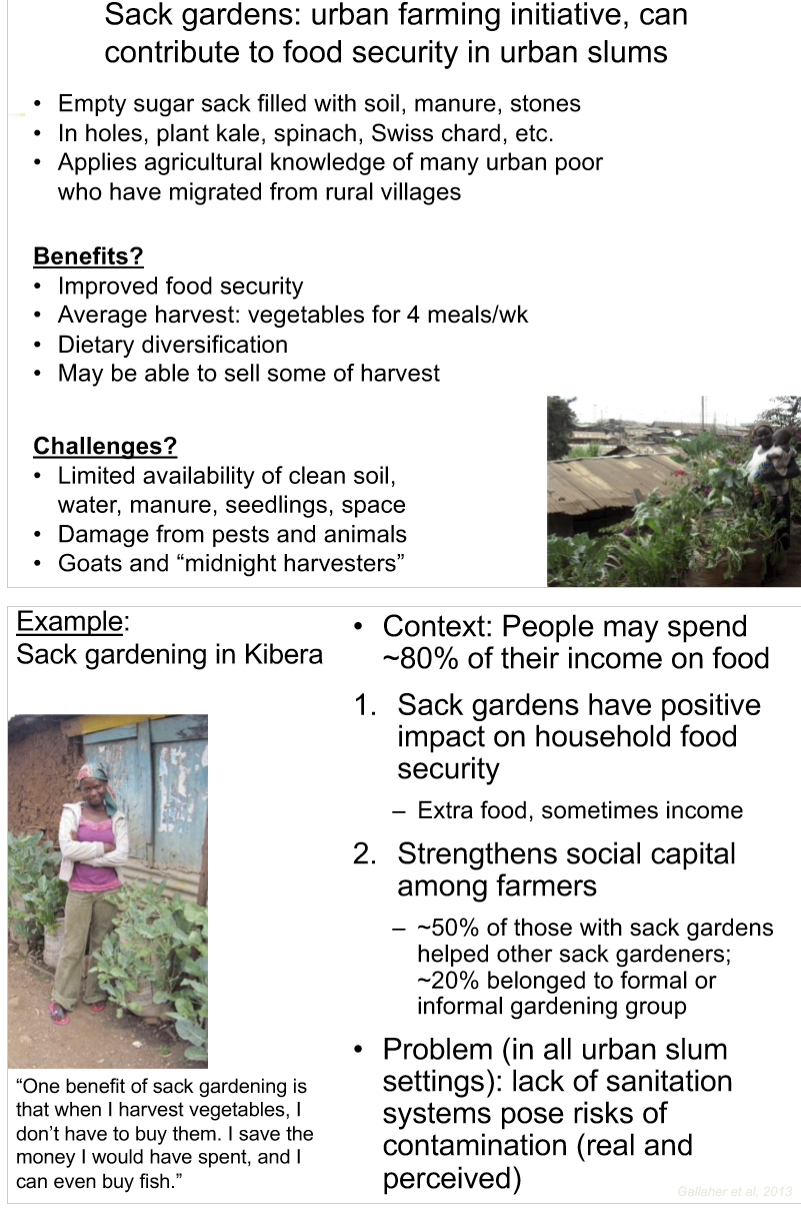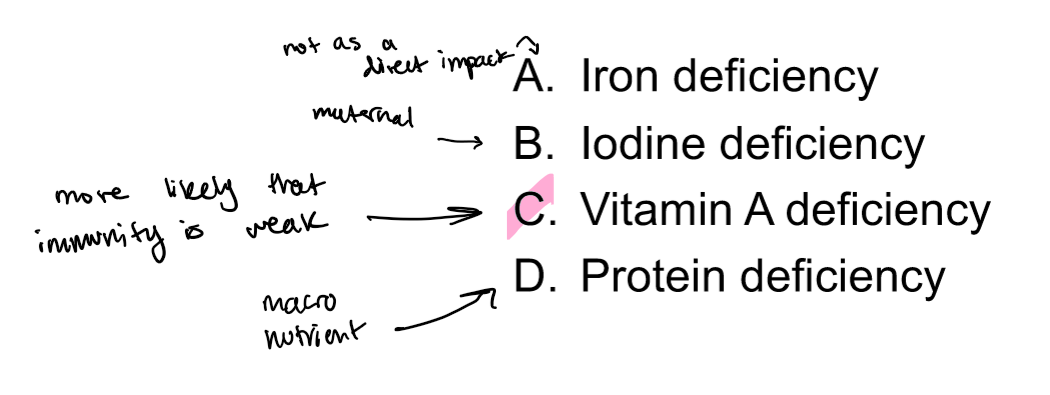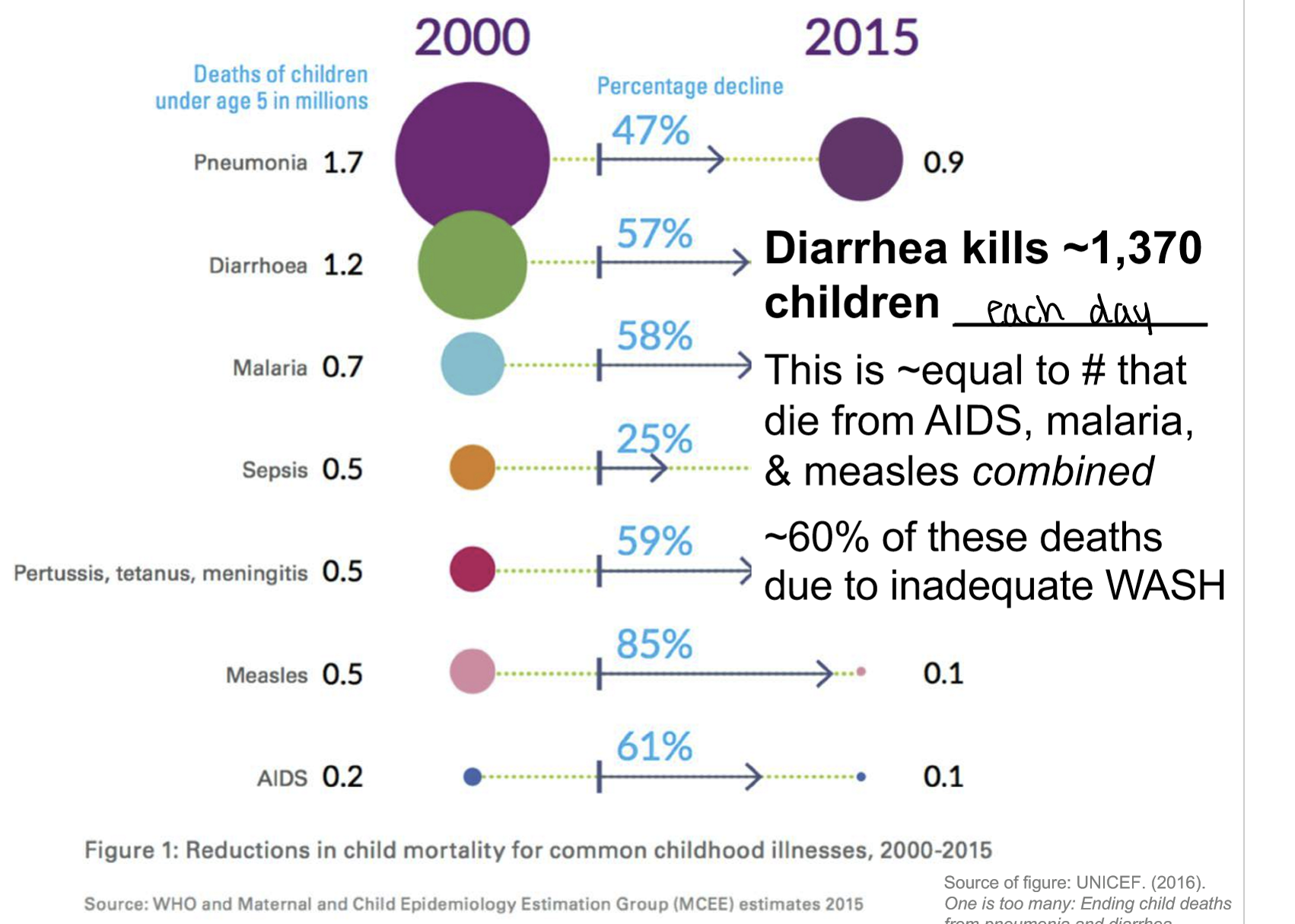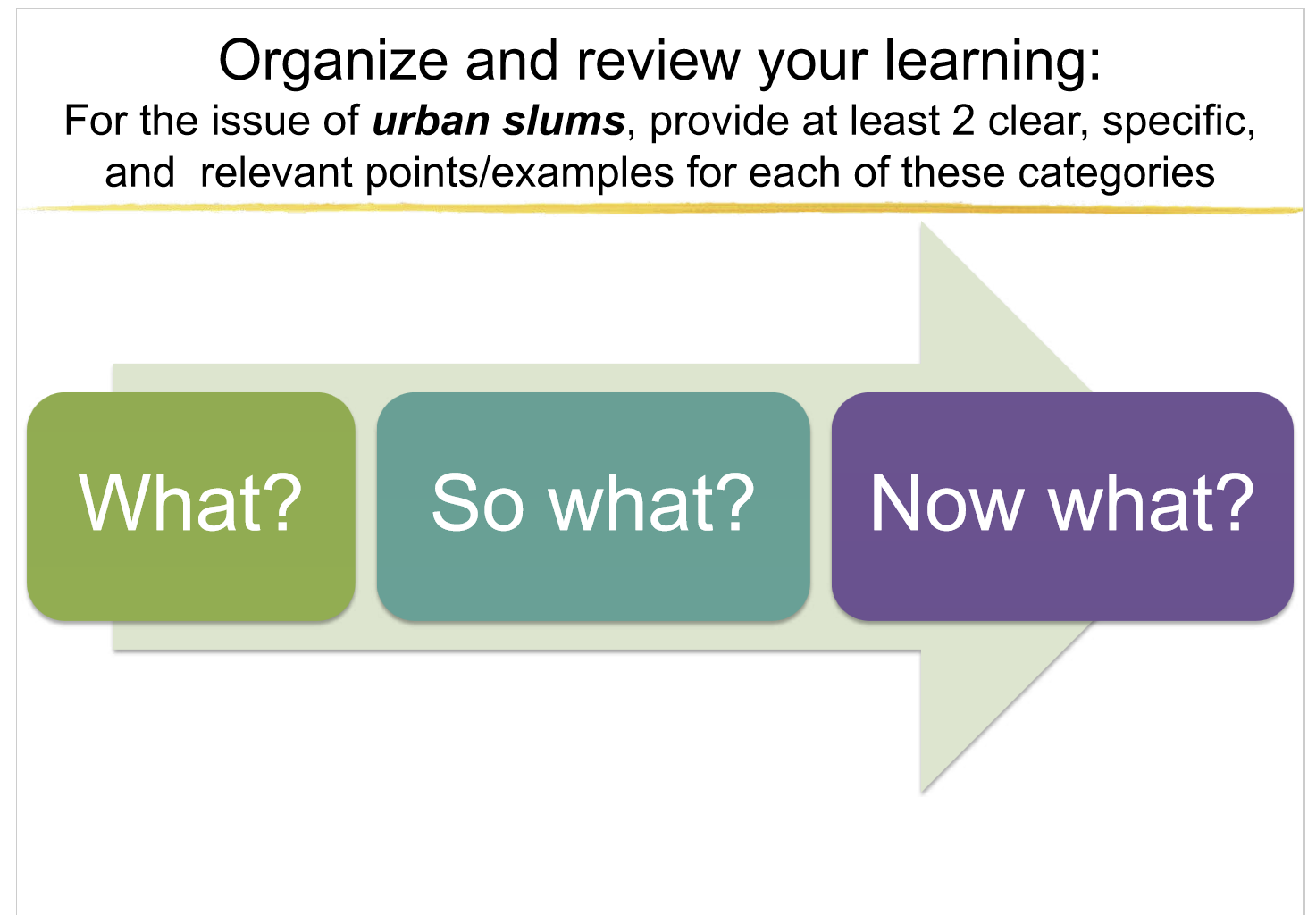asynchronous 8: urban slums and WASH
1/7
There's no tags or description
Looks like no tags are added yet.
Name | Mastery | Learn | Test | Matching | Spaced |
|---|
No study sessions yet.
8 Terms
define urban slums and provide examples of nutrition related challenges associated with living in an urban slum
overcrowding, inadequate access to safe water, sanitation, infrastructure. Housing of poor structural quality, insecure residential status.
infections
stunting, wasting, death
evaluate the usefulness of food production sack gardens to improve food security in the context of urban slums
growing extra food on own, can help with income, strengthens social capital among farmers but theres lack of sanitation→risk of contamination


a) iron deficiency b) iodine deficiency c) vitamin a deficiency d) protein deficiency

describe consequences of inadequate WASH
diseases like diarrhea, helminth infections, even death
intestinal parasites
environmental enteropathy
comment on the extent to which diarrhea is responsible for children’s deaths throughout the world
9%

describe what is meant by “improved“ drinking water and sanitation and characterize access to improved drinking water & sanitation throughout the world
piped water into dwelling or yard/plot, public tap, protected dug well or spring, rainwater collected and stored until used.
when water isnt on premises it needs to be collected by the women
improved sanitation
flush toilet, septic tank, pit latrin with slab, etc
82% of 1 billion of global population engages in open defecation
consider the role of social norms and personal beliefs in strategies to reduce open defecation and give examples of initiatives that have aimed to change social norms
no toilet no bride in haryana, india
social pressure

or WASH (final exam question)
What?
Urban slums are overcrowded settlements in cities where people live in poor housing conditions, often without access to clean water, sanitation, or secure tenure.
These areas typically lack basic services such as healthcare, education, and waste management.
So What?
Living in slums contributes to serious public health issues, including malnutrition, infectious diseases, and high child mortality rates.
Residents face social and economic exclusion, which limits opportunities for employment, education, and upward mobility.
The cycle of poverty continues across generations, and slums put pressure on urban infrastructure and environmental sustainability.
Now What?
Governments and organizations must invest in slum upgrading programs that improve housing, sanitation, and access to services.
Community involvement in planning and decision-making is key to sustainable development.
Policies should address root causes such as rural poverty, rapid urbanization, and lack of affordable housing to prevent further slum growth.
What?
WASH refers to access to safe Water, adequate Sanitation, and proper Hygiene practices.
Many low-income communities, especially in rural areas and urban slums, lack basic WASH infrastructure.
Inadequate WASH leads to exposure to contaminated water, poor waste disposal, and lack of handwashing facilities.
So What?
Poor WASH conditions are directly linked to the spread of waterborne diseases such as diarrhea, cholera, and typhoid — especially dangerous for children.
Diarrheal disease is a leading cause of child malnutrition and death globally.
Lack of WASH in schools and workplaces disproportionately affects girls and women, limiting education and income opportunities.
WASH issues also contribute to environmental degradation and increased healthcare costs.
Now What?
Invest in WASH infrastructure (e.g., clean water systems, toilets, handwashing stations), especially in vulnerable communities.
Promote WASH education and behavior change campaigns to improve hygiene practices (e.g., handwashing with soap).
Integrate WASH into nutrition, health, and education programs to maximize impact.
Support policy and funding at the local, national, and global levels to ensure sustainable access to WASH for all.